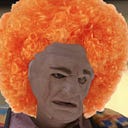“Ant-Man: Quantum Menace” Panned as Audiences Struggle to See It
In a surprising turn of events, the much-anticipated superhero blockbuster, “Ant-Man: Quantum Menace,” has made little impression on audiences. The film, which hit theaters last week, was eagerly awaited by Marvel fans worldwide. However, it seems that the microscopic superhero’s latest adventure was just too small for viewers to notice.
The movie, directed by Peyton Reed, promised mind-bending action and mind-boggling visual effects as Ant-Man, played by Paul Rudd, embarked on a journey into the quantum realm to save the world once again. But it appears that the film’s creators may have taken their shrinking gimmick a little too far.
Moviegoers complained of struggling to find their seats as the theater had mistakenly placed miniature screens instead of regular-sized ones. Patrons were left squinting and straining their eyes to catch a glimpse of the microscopic action unfolding on screen. Many viewers eventually gave up and left, opting to watch “Avengers: Endgame” for the hundredth time instead.
Audience member Sarah Thompson expressed her frustration, saying, “I paid good money for this movie, but all I could see was a bunch of tiny specks moving around. I thought it was a clever artistic choice at first, but then I realized I was just watching dust particles float across the screen.”
The lack of visibility wasn’t the only problem plaguing the film. Several viewers complained that they couldn’t hear the dialogue properly, as the sound levels seemed to have been shrunk down as well. Conversations between characters were reduced to barely audible whispers, leaving audiences scratching their heads in confusion.
“I strained my ears so much that I thought I could hear ants communicating with each other,” said Mark Davis, a disgruntled moviegoer. “But that wasn’t what I paid to see. I wanted to see a superhero film, not an ant documentary.”
Even those who managed to endure the sensory challenges faced disappointment with the storyline. Critics pointed out that the plot was so minuscule and convoluted that it was nearly impossible to follow. The film’s attempts to delve into the intricacies of quantum physics left viewers feeling lost in a microscopic maze of scientific jargon.
In response to the mounting criticism, director Peyton Reed defended his artistic choices. “We wanted to give the audience an immersive experience, to make them feel as if they were shrinking down with Ant-Man,” he explained. “But perhaps we went a bit too far. Next time, we’ll make sure our movie is visible to the naked eye.”
As ticket sales continue to plummet, theater owners are desperately trying to salvage the situation. Some have resorted to handing out magnifying glasses to patrons, hoping to enhance the microscopic visuals. Others have taken to projecting enlarged versions of the film onto nearby buildings, transforming entire city blocks into makeshift movie theaters. However, these efforts have done little to improve the film’s reception.
“Ant-Man: Quantum Menace” will undoubtedly go down in history as one of the most baffling and elusive cinematic experiences ever created. It’s a cautionary tale for filmmakers everywhere, reminding them that sometimes, going small isn’t always the best.
